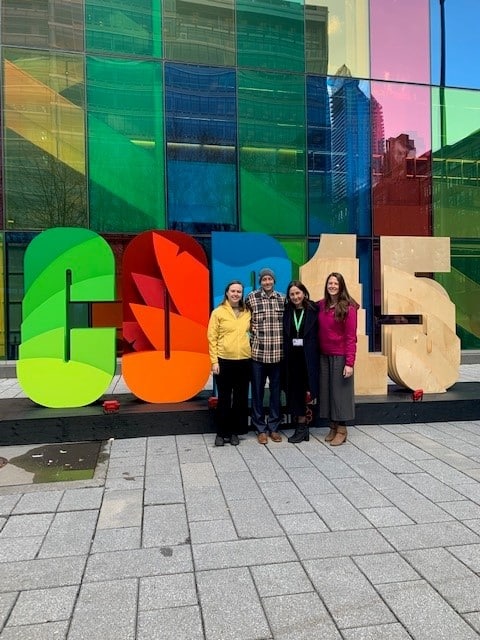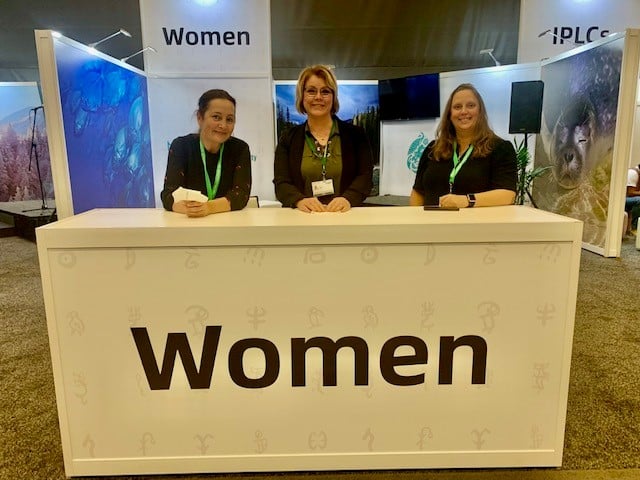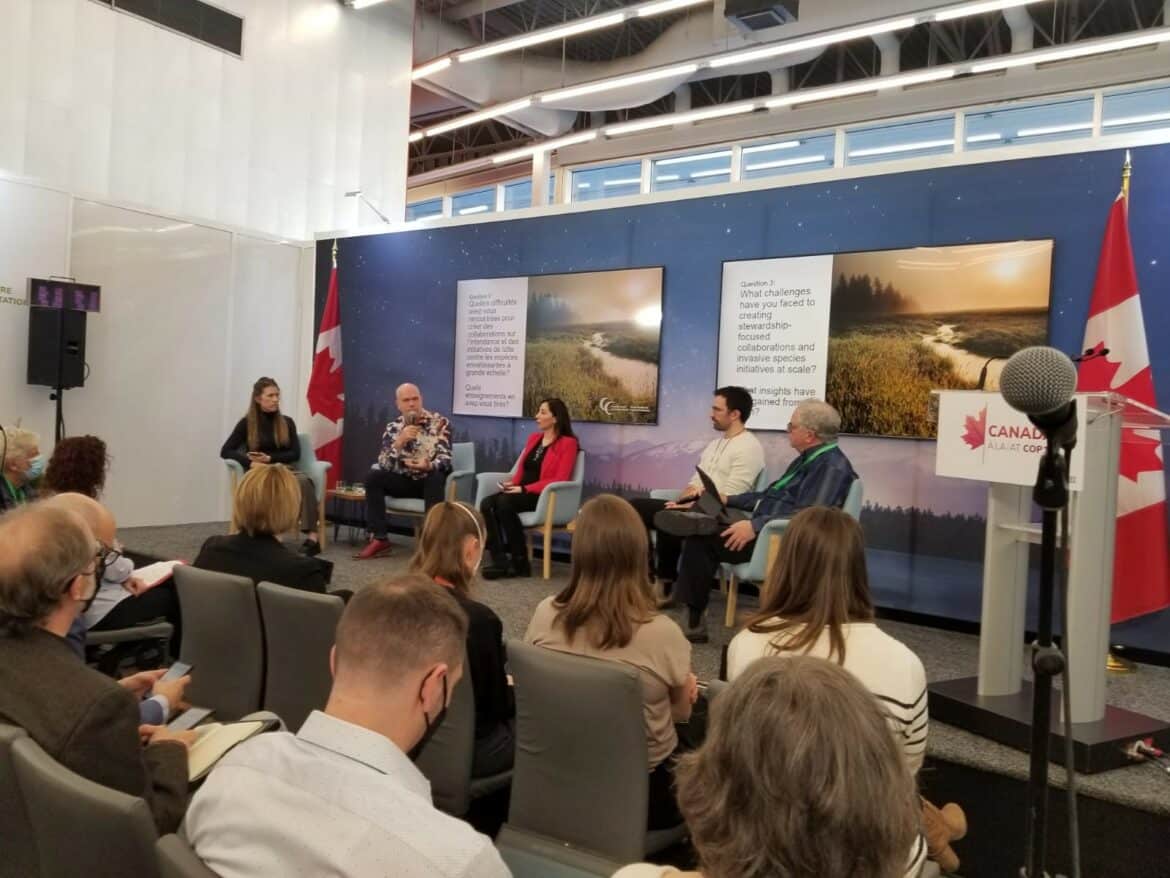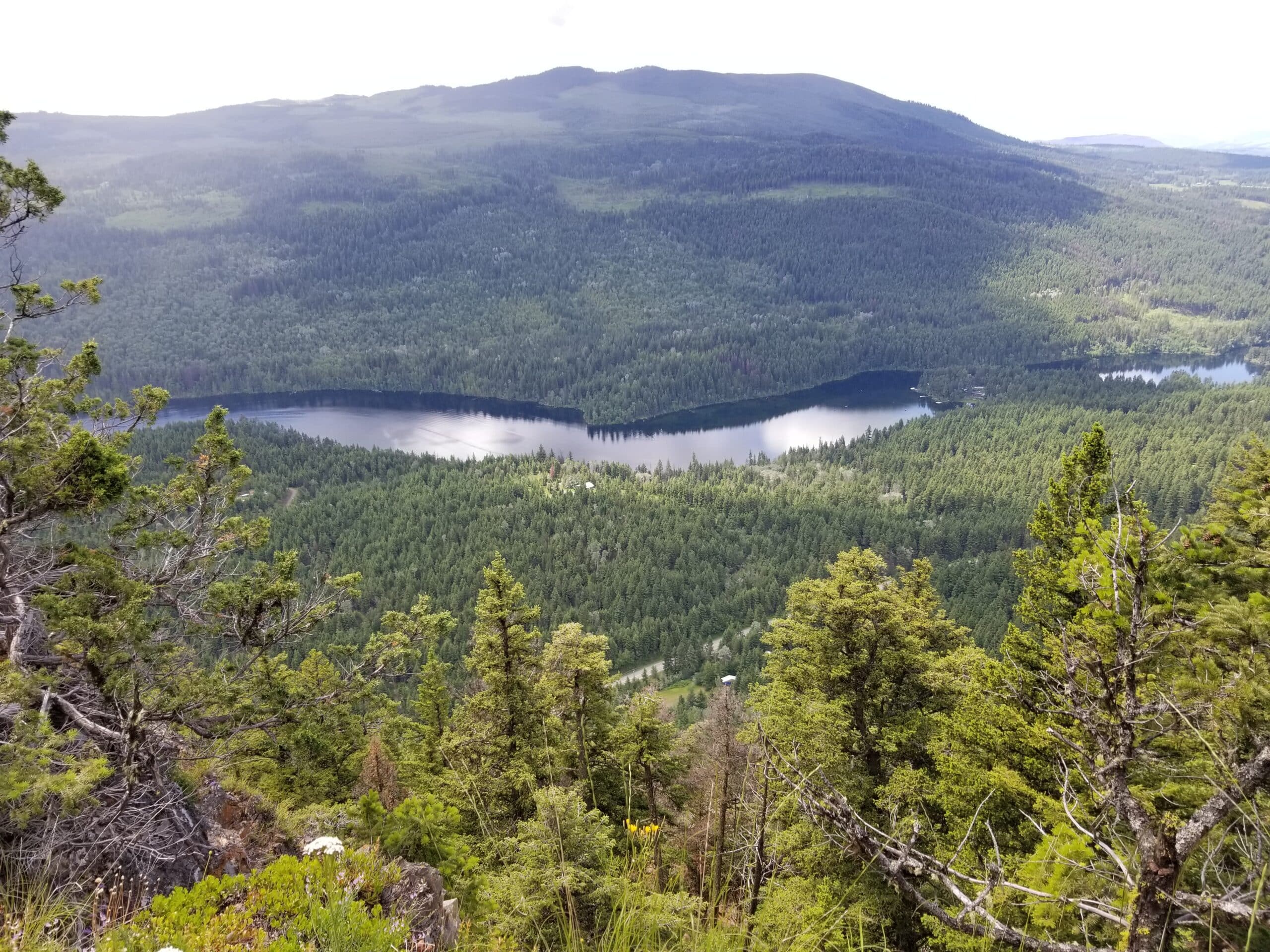December 22, 2022
“Without nature we have nothing.” The simple statement was one of the powerful expressions from UN Secretary-General Antonio Guterres during his opening address at COP15, the UN Summit on Biodiversity. And the world – represented by international delegates, scientists and advocates gathered in Montreal – seemed to agree.
But when you bring together representatives from more than 190 countries, all with their own challenges and unique experiences, there will be frustrating moments. Like a walkout by developing nations unable to commit to lofty targets without an inclusive budget. Words spliced out, and target phrases split apart as negotiators try to find consensus and something achievable that we might all live with – so we can quite literally, live.

And there are also moments for optimism. Connections made, new partners introduced, and the great work being done around the world showcased. We were inspired by the thoughtful conversations and fierce leadership among youth, and by the unique approaches to conservation involving people across various industries. We were deeply impressed by Other Effective Conservation Measures in the agriculture sector, and the clear respect for Indigenous ways of knowing in the form of increasingly prevalent Indigenous Protected Conservations Areas.

A big part of protecting nature means managing invasive species – preventing their introduction and containing the spread. Invasive species are the second greatest threat to biodiversity after habitat loss. They are the plants, animals and microorganisms often introduced by accident – a seed caught in the wheel of a mountain bike transported to a totally different ecosystem on the next adventure; a pet goldfish set free in the local river. When invasive species establish, they take over – stacking the deck against native species, culturally significant species, and species at risk.
Invasive species management plays a key role in ecosystem health. Where biodiversity and native species thrive, landscapes and communities are much better protected against extreme weather and climate change.
Ken Donnelly is a Director with the Canadian Council on Invasive Species (CCIS). He was also part of the Canadian delegation at COP15. He believes Canada and the international community recognize the urgency around invasive species. “The Invasive Species Council of BC (ISCBC) and CCIS would like to acknowledge Canada’s leadership at COP15, including the clear commitment to this collective work by the incredible team at Environment and Climate Change Canada. We would also like to recognize the leadership of the President of China and our Minister of the Environment, Stephane Guilbeault, and to thank all the countries that took part. We are grateful to be part of the Canadian delegation, and we are ready for the important work ahead.”

Eliminating and reversing invasive species around the world has been identified as a key part of the Global Biodiversity Framework.
Donnelly recognizes the work organizations, like CCIS and ISCBC, are positioned to do both regionally and nationally. “At home in Halifax, I am part of a Trust that protects a wilderness area and its biodiversity. In Montreal, the international community discussed how to protect biodiversity in 30% of the world’s land and water by 2030 – just like at home but scaled across the globe. To be included in that conversation, and to recognize the international community’s awareness around the impact of invasive species on biodiversity, gives us great momentum to collaborate and move forward in Canada, in a big way.”
So now, back to the practical application of the work. It must involve Indigenous-led strategy, dynamic public engagement, strong science and research, and clear cross-jurisdictional collaboration. These are the founding principles of CCIS and ISCBC. And we look forward to supporting a collaborative effort that leads the way.
Share


















